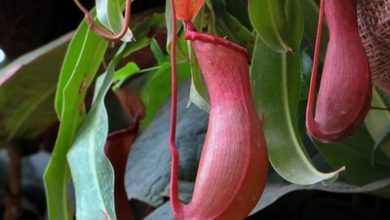List of the Main Tomato Pests and Diseases
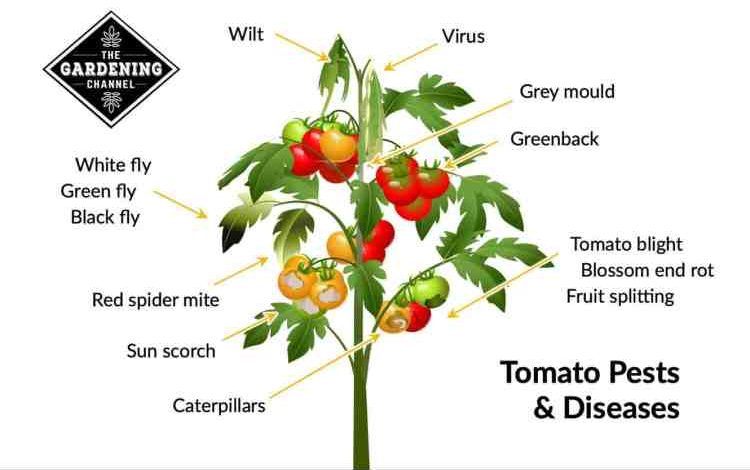
 In recent years, tomato cultivation has become one of the most popular in urban gardens around the world.
In recent years, tomato cultivation has become one of the most popular in urban gardens around the world.
That’s right.
Homegrown tomatoes are always much tastier and healthier than grocery store bought.
By the same token, it should come as no surprise that most orchards include tomatoes in their repertoire.
Unfortunately, the tomato encounters many obstacles to successful planting. As with other crops, spring is one of the most critical times for its growth, since, with the increase in temperatures and humidity, countless pests and diseases proliferate.
In this article, we will discuss the main challenges you will encounter if you want to grow tomatoes in your garden or urban garden.
To deepen on tomato planting:
- Tomato fertilizer.
- Tomato pruning.
- Different types of tomatoes to grow.
- The properties of the tomato.
Major diseases
Among these we can find:
Powdery mildew (Leveillula taurica)
 It is one of themain tomato diseases.Symptoms appear first on older leaves as yellow spots and may be necrotic in the center. A whitish powder also appears on the underside of the leaf.
It is one of themain tomato diseases.Symptoms appear first on older leaves as yellow spots and may be necrotic in the center. A whitish powder also appears on the underside of the leaf.
The main sources of inoculum are wild Solanaceae. It develops between 10 and 35ºC, with an optimal temperature of 26ºC and a relative humidity of 70%.
For its prevention, it is important to eliminate weeds and the remains of other previous crops, as well as to use healthy seedlings.
Gray rot (Botrytis cinerea)
It is a parasite that attacks tomato plantations and can even cause the death of the plant . It mainly attacks fruits and the calyx. The typical symptom is a light brown, non-aqueous lesion that is covered with a grayish mold and ends up covering the entire fruit.
The main sources of inoculum are conidia and plant debris that are dispersed by the wind. It develops between 17 and 23ºC, with a relative humidity of 95%.
To prevent Botrytis it is importantcontrol the levels of nitrogen and calcium in the soil,remove the plants that have already been affected by the disease and take special care in pruning, making clean cuts flush with the stem and, if possible, when the relative humidity is not very high.
White rot (Sclerotium rolfsii; Sclerotinia sclerotiorum)
It is a polyphagous fungus that attacks most horticultural species. It attacks the neck of the plant, where aqueous brown lesions appear. Subsequently, a white mycelium develops at the base of the stem, in which sclerotia form on the lesions. It can attack roots, seeds or fruits.
The sclerotinia sclerotiorum variety only attacks the soil surface upwards, affecting foliage, fruits and stems. In these a white cottony mold is formed that causes the rotting of the fabrics.
The disease starts from soil sclerotia from previous infections, which germinate under conditions of high relative humidity and mild temperatures.
For its prevention, it is recommended to remove the plants that have already been affected by the disease and to make an adequate management of ventilation and irrigation.
Mildew (Phytophthora infestans)
 This fungus affects different species of Solanaceae. In tomato, it attacks leaves, branches and fruits, causing irregular greasy or watery rot.
This fungus affects different species of Solanaceae. In tomato, it attacks leaves, branches and fruits, causing irregular greasy or watery rot.
A white mold appears on the underside of the leaves. For its part, the affected fruits smell bad.
The dispersion of the fungus is carried out by rain and wind, sprinkler irrigation, dew and condensation drops. Favorable conditions for its development are relative humidity above 90% and temperatures between 10 and 25ºC.
For its prevention, it is recommended to remove the plants that have already been affected by the disease and to make an adequate management of ventilation and irrigation.
It is also recommended to use healthy seedlings.
Alternariosis (Alternaria solani; Alternaria alternata)
It mainly affects Solanaceae, mainly tomatoes and potatoes. It begins by attacking the old leaves, causing circular spots with concentric rings.
The Alternaria alternata variety also produces a black mycelium and dark angular lesions on the leaves.
It can be transmitted by seeds, infected plant debris, wild nightshades, splashing water, rain, or wind. It develops between 3 and 35ºC. Sporulation is favored by humid nights followed by sunny days with high temperatures.
For its prevention it is recommended to remove weeds, as well as plants that have already been affected by the disease. It is also recommended to make an adequate management of ventilation and irrigation, and a balanced subscriber.
It is better to use healthy seeds and seedlings.
Fusarium oxysporum
It occurs during flowering and fruit ripening. It begins with the fall of petioles of upper leaves. Older leaves turn yellowish.
Dissemination is done by seeds, wind, soil tillage, diseased plants or contaminated tools. The fungus can remain in the soil for years and penetrate through the roots into the vascular system. It enters the plant through wounds, mainly those caused by nematodes. The optimum development temperature is 28ºC.
For its prevention, it is recommended to rotate crops to reduce the presence of the pathogen in infected soils. It is also advisable to remove infected plants and crop debris. The best way to prevent the disease is to use resistant varieties, as well as healthy seedlings and certified seeds.
main pests
Among the pests that most affect the tomato we can find:
Red spider
The red spider mite is a four-legged mite, quite tiny. Its size does not exceed approximately 0.5 mm and it is always found in groups. As a peculiar characteristic, its color varies according to the season: it is light green with black spots during the summer months, and orange without spots in the autumn and winter months.
 They feed on the sap of plants and it is one of the pests that best adapts to different types of crops.
They feed on the sap of plants and it is one of the pests that best adapts to different types of crops.
These insects form a white web on the leaves and stems to protect themselves from predators. They settle, primarily, on the underside of the leaf and feed on the surface layer of the leaf, immediately causing clear spots on the upper and lower sides of the leaf, which increase in size until the leaf becomes definitively and completely yellow.
These damages are irreversible and cause the death of the leaves.
To prevent its appearance, it is recommended to keep the crops clean of weeds and remains of previous crops. Another effective form of prevention is crop rotation.
It is also recommendedavoid substrates with excess nitrogenand monitoring of crops during the early stages of development. In fairly dry climates it is recommended to water crops at night to maintain moisture.
Another recommendation is disinfection prior to planting in plots with a history of red spider mite to ensure that there are no eggs left.
To combat an infestation, an extract of garlic and chili can be applied, although if the plant is very affected, it is best to eliminate it to prevent it from spreading to other plants.
Biological control can be carried out through its natural enemies. The main predatory species of spider mite eggs, larvae and adults are other species of mites such as Amblyseius californicus and Phytoseiulus persimilis. The Feltiella acarisuga mosquito is also a fairly effective predator.
White fly
The whitefly ismost harmful exotic species in the world. It is asmall, pale-colored hemiptera, barely exceeding 2 mm in length. Its two white wings allow it to move quite easily between plants. During the winter it remains on the underside of the leaves.
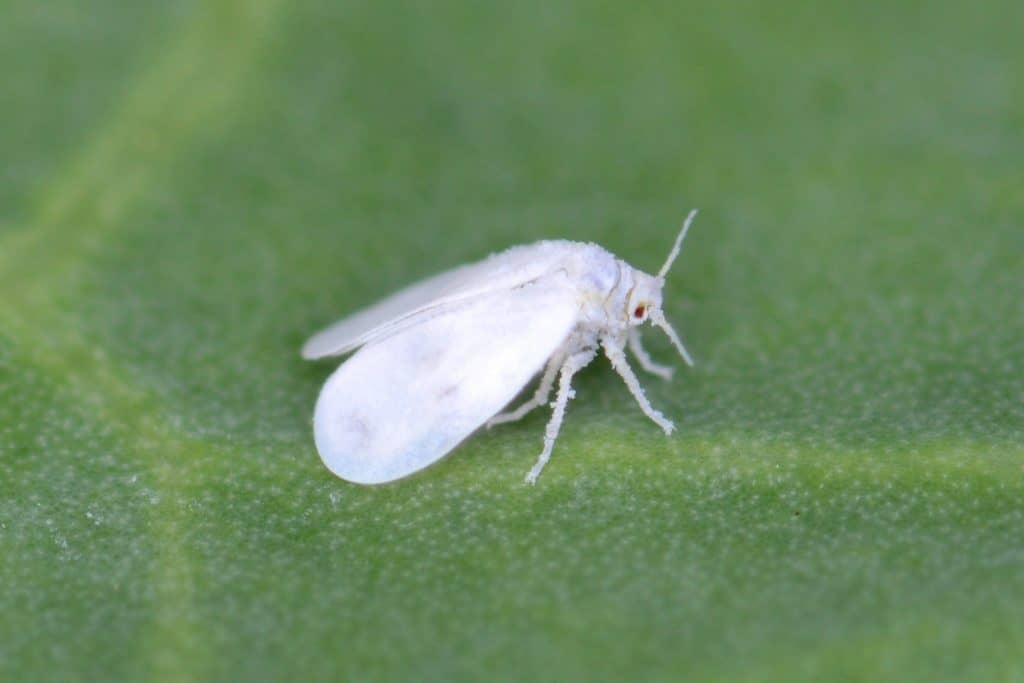 The damage they cause mainly in crops are yellowish spots on leaves, deformities in fruits, leaves and stems, and, if the population is very high, it can lead to a weakening of the plant, chlorosis and desiccation of the leaves. In addition, the molasses secreted by this pest favors the attack of fungi.
The damage they cause mainly in crops are yellowish spots on leaves, deformities in fruits, leaves and stems, and, if the population is very high, it can lead to a weakening of the plant, chlorosis and desiccation of the leaves. In addition, the molasses secreted by this pest favors the attack of fungi.
Whiteflies are often attracted to yellow and light green, so traps or containers of these colors with sticky surfaces can be placed for them to adhere to.
Likewise, it is recommended not to associate crops in the same greenhouse, nor to abandon the shoots at the end of the cycle, since the young shoots attract whitefly adults.
Biological control can be done bytheir natural enemies.Some of them are the ladybug, lacewing, predatory beetles (Orius sp) and parasitic wasps (Encarsia sp).
To combat them, in addition, ecological alternatives can be used, such as applying 1% potassium soap sprayed with rainwater or distilled water to the underside of the leaves.
aphids
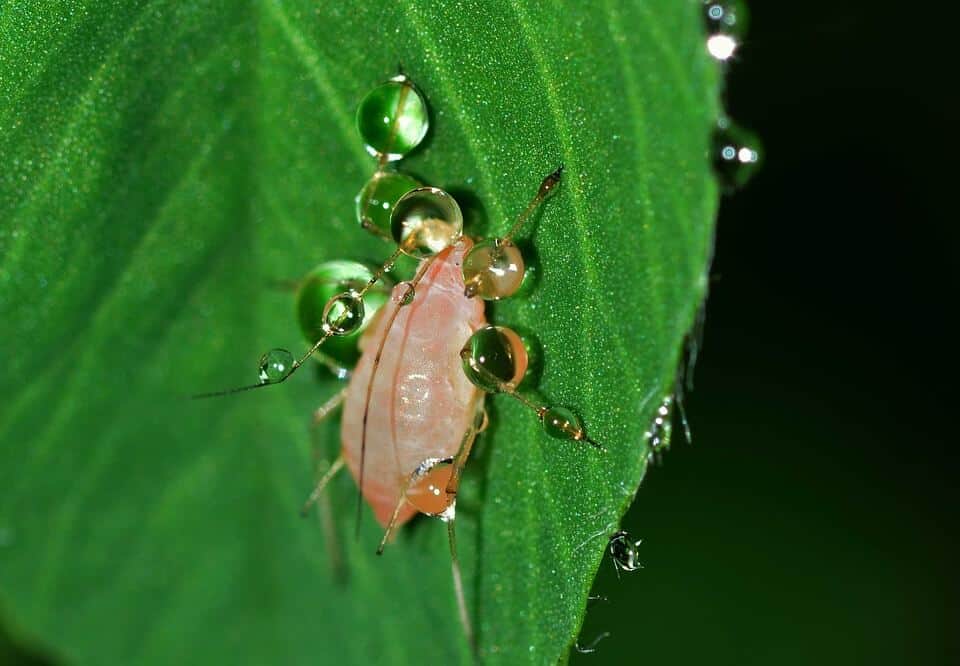 They are small insects, of varied colors and with a smooth and ovoid body.
They are small insects, of varied colors and with a smooth and ovoid body.
Some have wings and have small appendages on their abdomen that allow them to secrete a substance that repels their natural enemies. They also produce a sugary molasses that they excrete through the anus and that serves as food for the ants, who in turn protect them from their natural predators. This same secretion is, likewise, very useful for bees, since they incorporate it in the manufacture of honey.
They usually settle on the underside of the leaves. The main damages to plants and fruits are: leaf deformation, foliage chlorosis, product depreciation due to malformations and discoloration, and premature death.
To prevent the appearance of aphids, the total elimination of weeds and remains of previous crops is recommended.
Biological control can be carried out through its natural enemies. The main predators of aphids are Aphidoletes aphidimyza, which is a small fly whose larvae feed on more than seventy species of aphids.
To combat them, in addition, potassium or biodegradable soap can be applied to the underside of the plants. It should be applied very early in the morning or in the afternoon, when the sun no longer hits the leaves. The soap will help clean the honeydew excreted by the aphid and soften its cuticle.
thrips
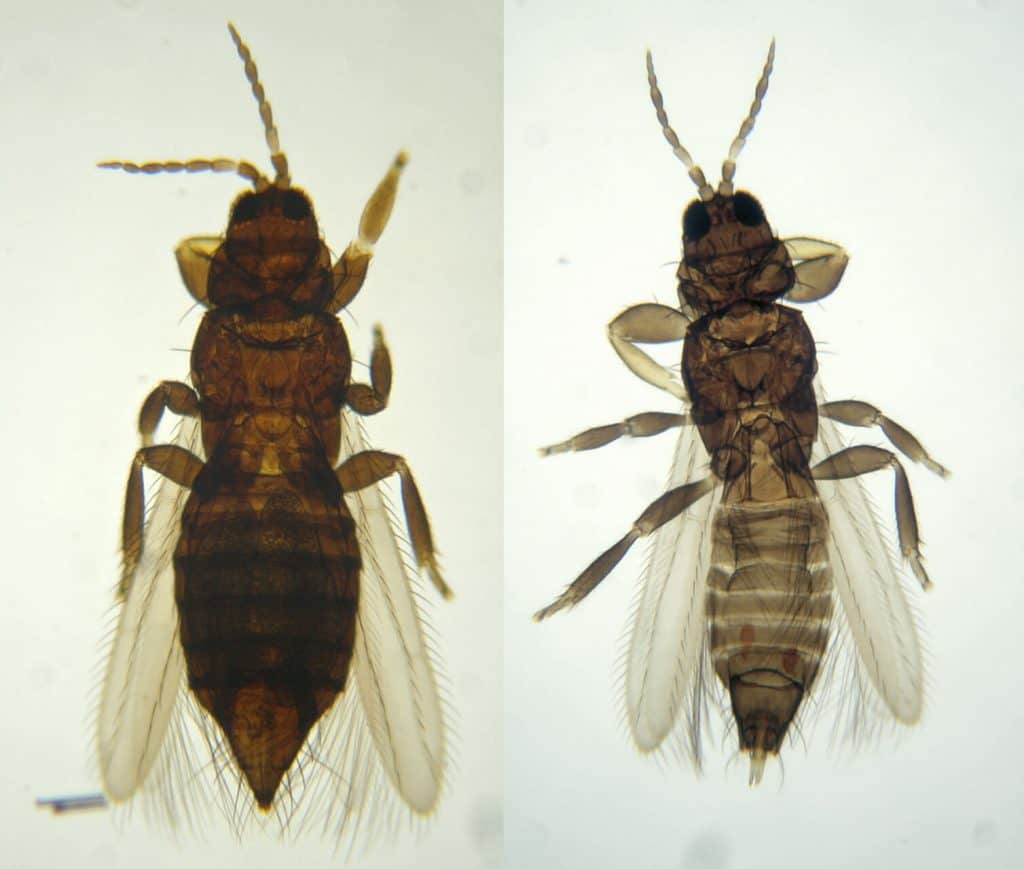 They mainly affect vegetable crops: cucumbers, watermelons, melons, tomatoes, peppers, courgettes and onions.
They mainly affect vegetable crops: cucumbers, watermelons, melons, tomatoes, peppers, courgettes and onions.
They are small insects between 1 and 3 mm that basically feed on fungi and vegetables.
When thrips reach maturity they colonize crops, laying their eggs inside the plant tissues of leaves, fruits and flowers.
When larvae and adults feed, they leave whitish spots, especially on the undersides of the leaves, which then become necrotic. The symptoms are seen when the deterioration has spread widely over the leaves or when it occurs in the fruits, since the spots are more evident on them. Furthermore, thrips can act as vectors for more than 20 viruses.
To combat them, ecological alternatives can be used, such as potassium soap and neem extract.
One form of preventative control is to set out blue or yellow traps or containers with sticky surfaces for them to stick to.
Biological control can be carried out through its natural enemies. Thrips have several natural predators such as certain varieties of mites, especially the Amblyseius barkeri and the Orius bug.
leaf miners
Leafminers are essentially insect larvae that live inside leaf tissue. They usually dig small galleries or paths between the leaves and stems, which reduces the space for the plant to photosynthesize.
To know more: The tomato moth or Tuta Absoluta.
 The main damage occurs by the excavation of the leaves and stems. In most cases, the leaf ends up being destroyed, curling and the cuticle ends up blackening.
The main damage occurs by the excavation of the leaves and stems. In most cases, the leaf ends up being destroyed, curling and the cuticle ends up blackening.
In addition, the wounds caused by this plague facilitate the entry of other pathogens such as fungi, bacteria and viruses.
Miners are often attracted to the color yellow, so yellow traps or containers with sticky surfaces can be placed for them to stick to.
Biological control can be carried out through its natural enemies. Some of them are parasitic wasps such as Diglyphus isaea, Diglyphus minoeus and Diglyphus crassinervis, as well as Chrysonotomyia formosa and Hemiptarsenus zihalisebessi.
To combat the adults , neem extract can be applied to the leaves and the bacteria Bacillus thuringiensis against the larvae that produce the galleries in the leaves. It is also effective to crush the larvae with our own fingers, making sure not to hurt the plant.
In strong attacks it is convenient to eliminate and destroy the lower leaves of the plant.
nematodes
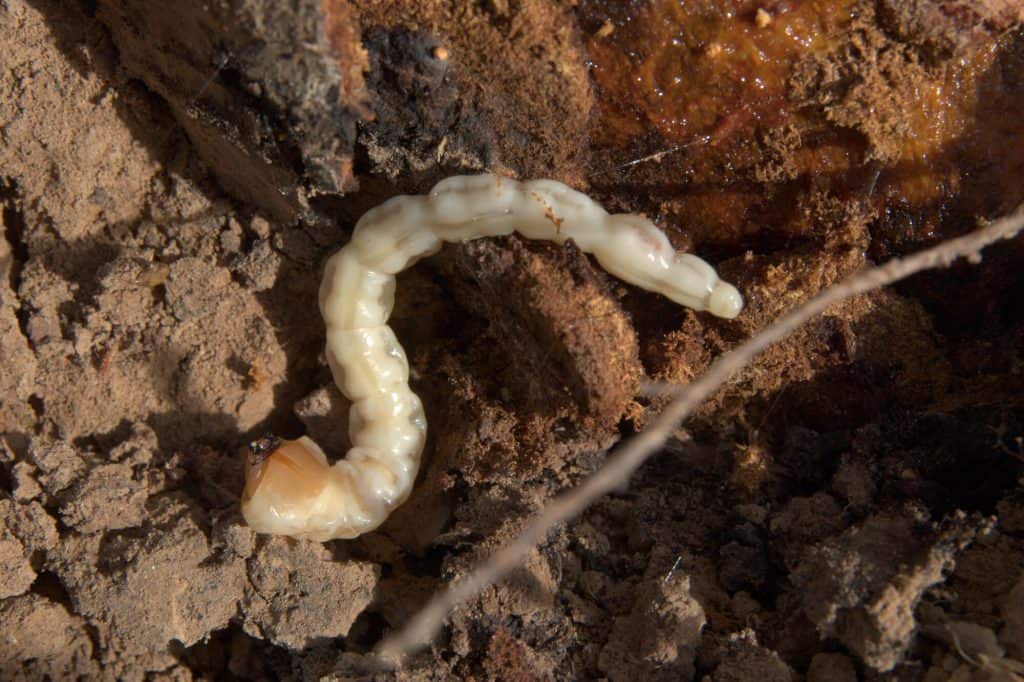 Nematodes are small worms found in the soil. They can reach up to 2 mm and feed on plant roots.
Nematodes are small worms found in the soil. They can reach up to 2 mm and feed on plant roots.
They are easily transmitted by irrigation water and by any means of land transport. In addition, nematodes are virus vectors and facilitate the entry of bacteria and fungi through the wounds they have caused.
To control them, we can plant garlic cloves as a repellent.
It is also important to have a crop rotation and fertilize our soil. If possible, plant resistant varieties and healthy seedlings.
They can also be treated with steam sterilization and solarization.
As a biological control, the preparation based on the fungus Arthrobotrys irregularis is quite effective.
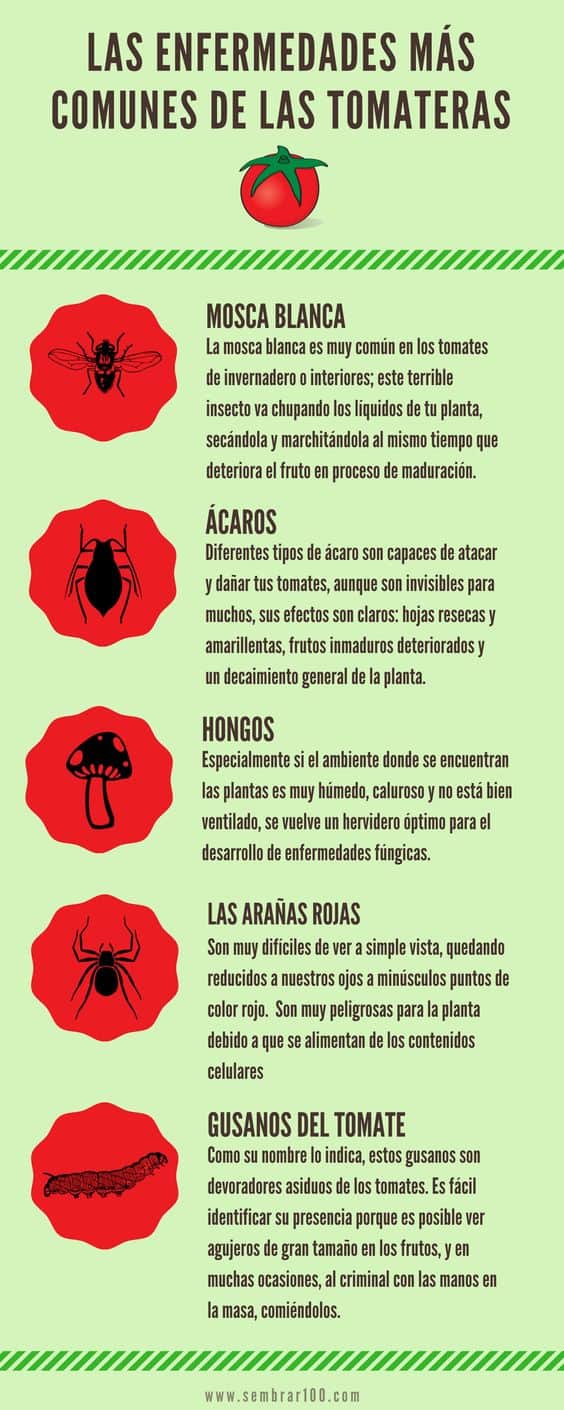

![Photo of Celinda: [Characteristics, Cultivation, Care and Disadvantages]](https://www.complete-gardening.com/wp-content/uploads/2022/08/celinda-characteristics-cultivation-care-and-disadvantages-390x220.png)
![Photo of Garden Furniture: [Sustainability and Where to Buy]](https://www.complete-gardening.com/wp-content/uploads/2022/08/garden-furniture-sustainability-and-where-to-buy-390x220.jpg)
